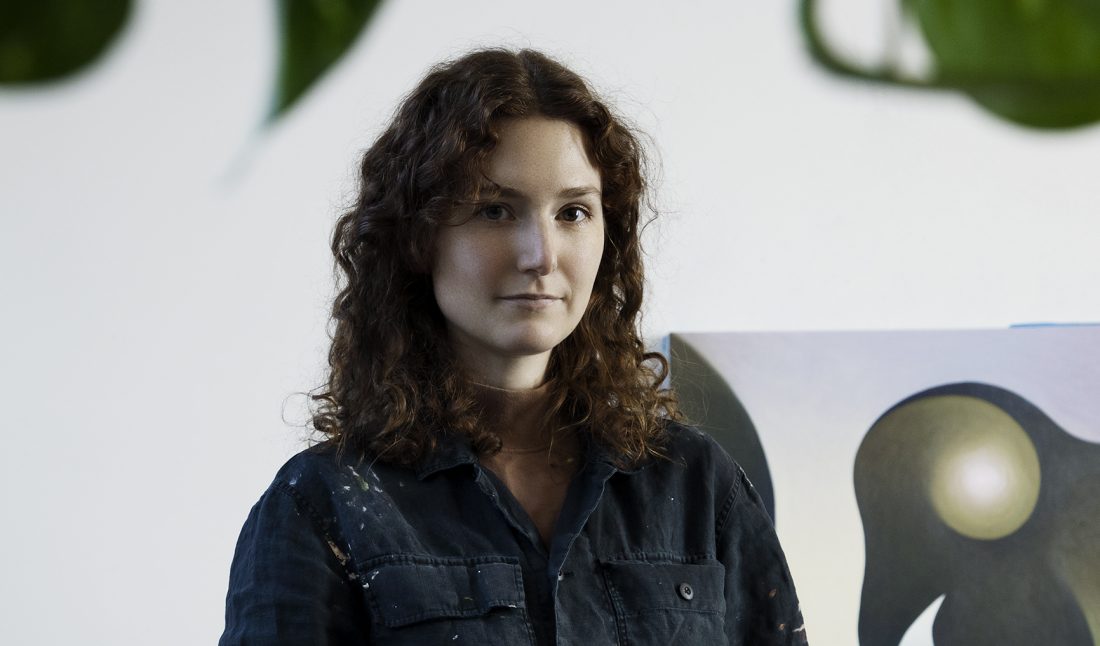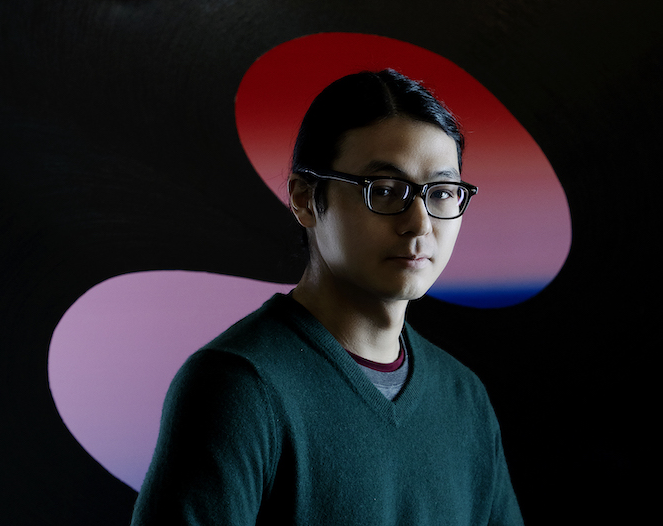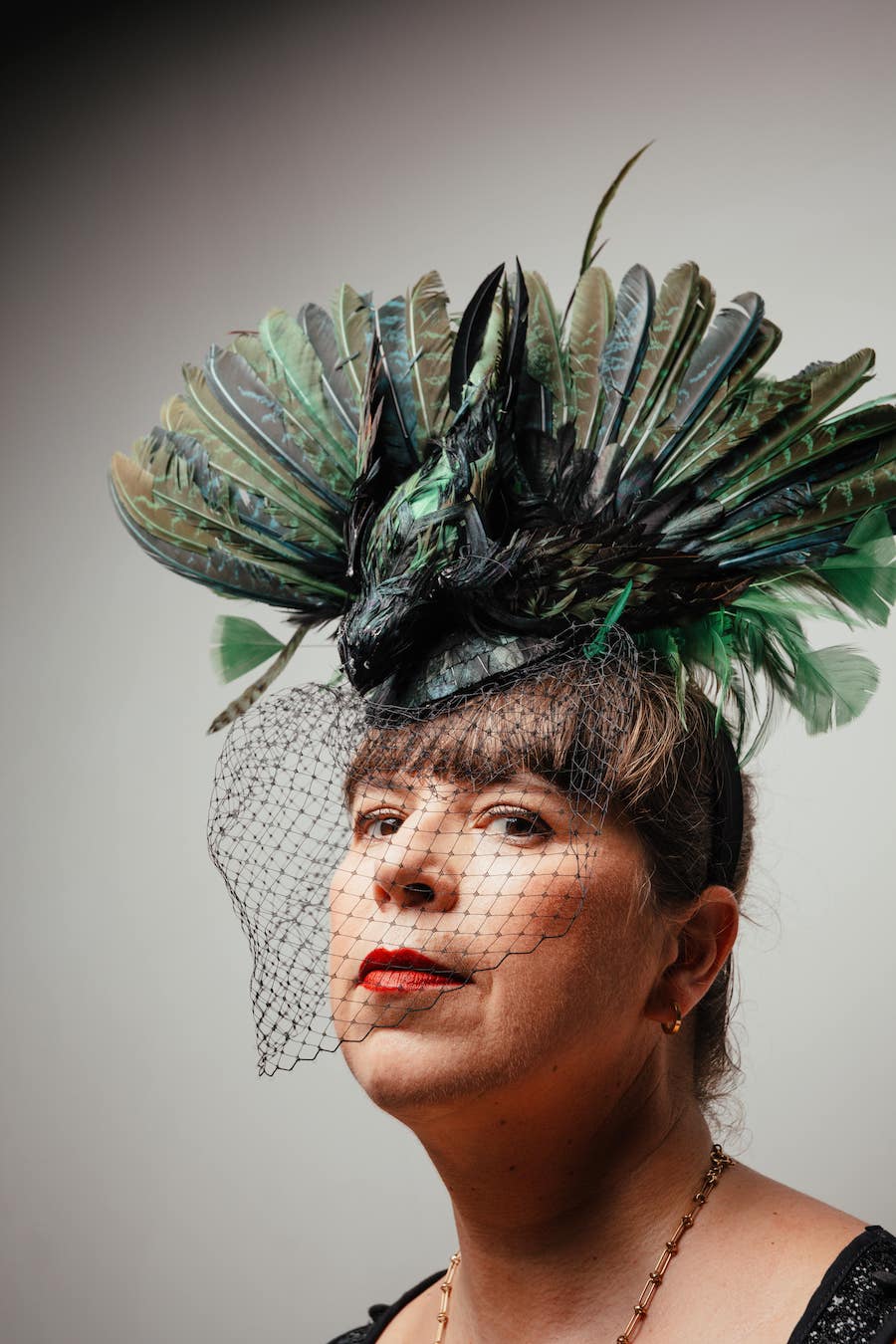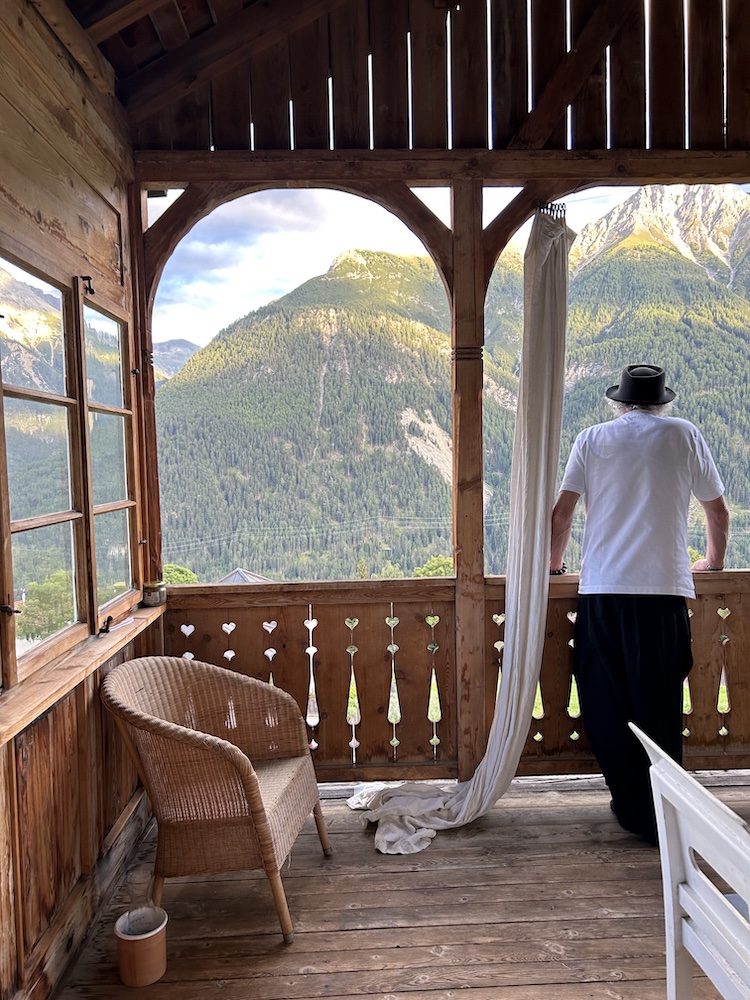Angela Heisch’s work is currently on view in two groups shows—“Romancing the Surface” curated by Loie Hollowell at Grimm Gallery in Amsterdam (through March 6) and “UnRealism” at Shoshana Wayne in Los Angeles (through April 3). The Brooklyn-based artist’s recent paintings and pastels are infused with orbital motifs, at once resembling celestial occurrences and Earth-side natural forms. Playing with the figure and the landscape all in one piece, Heisch adds emotion and warmth to her work aiming to personify them.
Photographer Steve Benisty recently captured Heisch in her studio for Whitewall. The artist shares below how she’s lately finding inspiration in fantasy, outerspace, and the chaos of nature.
WHITEWALL: Can you tell us about the piece Blushing Cheeks, currently on view at Grimm Gallery in the group show “Romancing the Surface,” curated by Loie Hollowell?
ANGELA HEISCH: Blushing Cheeks I made as part of a small series in which figure, portrait, and landscape all exist in one picture. The two “circle within a circle” forms in the corners of the painting function as eyes, directing their vague gaze outward. These eyes are linked by their smaller counterparts in the center of the painting, creating a distorted figure. This figure is subsequently woven into a warm earth and sky landscape. The linear framework of this painting consists of interlocking geometry, specifically circles and half-circles, creating a support structure from which the rest of the painting expands from.
It’s title, Blushing Cheeks is in reference to the hazy pink glow that sits nestled on the center edges of the painting. These features ascribe feelings of warmth, playfulness, embarrassment, a reactionary emotion. Importantly, it’s a way to personify the work, which is an important element in most of my paintings.
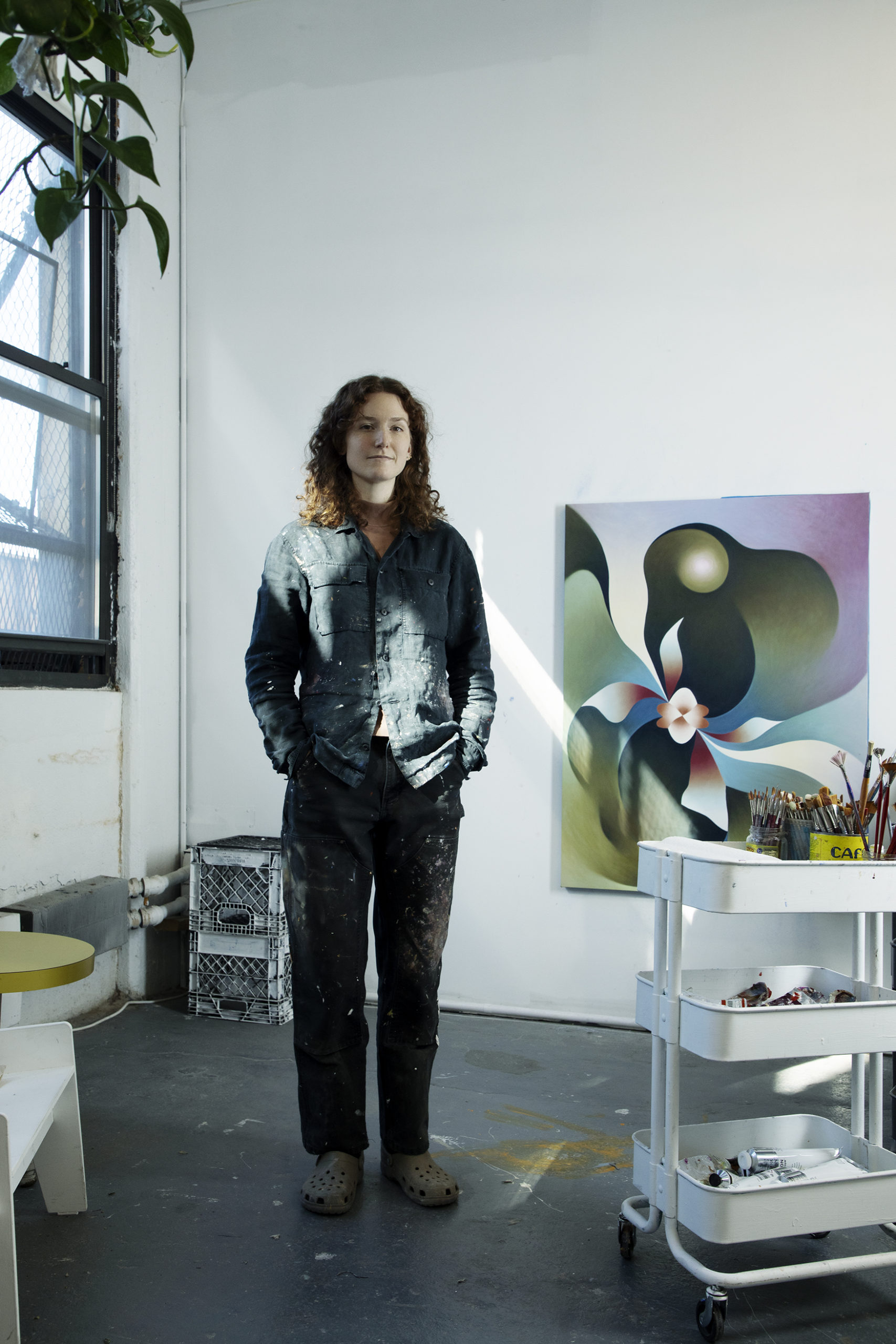 Angela Heisch, photo by Steve Benisty.
Angela Heisch, photo by Steve Benisty.
WW: You also have three pastel works in “UnRealism” at Shoshana Wayne, on view through April 3. Can you tell us about those and if there was a prompt or starting point for that group of work?
AH: My pastels usually involve very little planning and are predominantly useful in working out ideas for larger paintings. These drawings were some of the first iterations of an orbital motif I’ve been working with, in which planes of color are repeated outward, forming an often cavernous landscape. I’m thinking specifically about the unfurling of a form, and the repetitive but unexpected nature of growth. In each of these pastel drawings, I wanted to explore the different variations of that action.
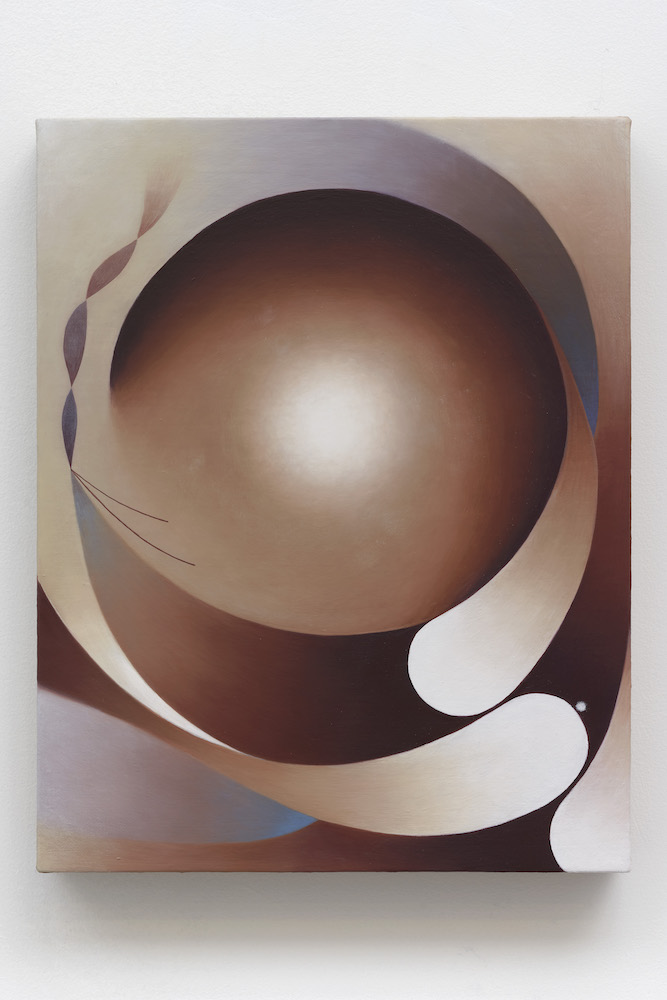 Angela Heisch, “Round Eye,” 2020, oil on linen over panel, 9 x 13 inches, courtesy of the artist.
Angela Heisch, “Round Eye,” 2020, oil on linen over panel, 9 x 13 inches, courtesy of the artist.
WW: What’s a typical starting point for you in your practice?
AH: I start with a series of thumbnails, to get a few possible scenarios for a painting. From there, I most often make a pastel based on one of the thumbnails. The pastels are great to work out color, and maybe to edit composition. If I want to recreate a pastel as a painting, I pay attention to any compositional changes I want to make while I’m sketching things out on the panel. I try to match colors accurately to the pastel during the first few layers of underpainting, and usually stop paying such close attention to the pastel reference as the painting progresses.
WW: Your recent work calls to mind images of the sky, planets, the sun, clouds—looking upward. What has been inspiring you recently?
AH: All of those things! I’ve always been inspired by patterns in nature, natural phenomena, and things that feel much bigger than ourselves, while also feeling familiar. I’ve been thinking more about fantasy, really striving for less rigidity in my work. I’m thinking about space, actual imagery of outer space, but more so I’m thinking about the forms in my paintings existing in a space that isn’t grounded or rooted in architecture. I’m thinking of this newer work as exhibiting forms grown in nature, the balance and chaos that entails, and having lots of fun exploring all the possibilities of that imagery.
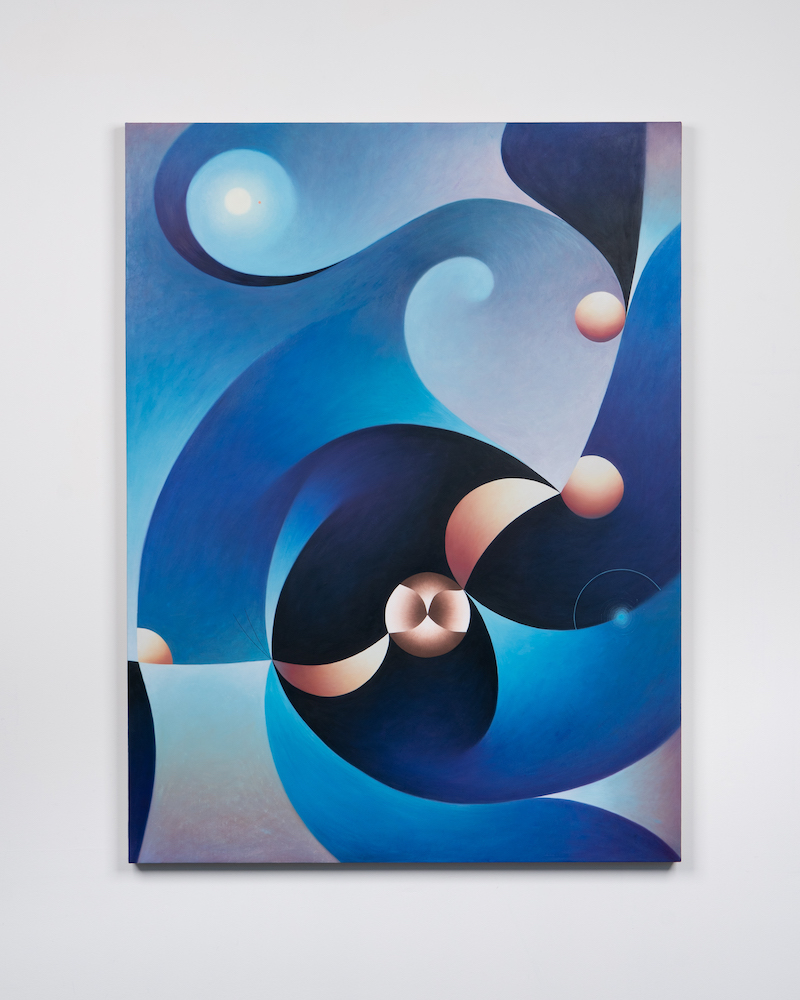 Angela Heisch, “Blue Stairs,” 2021, oil on linen over panel, 36 x 48 inches, courtesy of the artist.
Angela Heisch, “Blue Stairs,” 2021, oil on linen over panel, 36 x 48 inches, courtesy of the artist.
WW: Can you tell us about your studio space? What’s a typical day like for you there?
AH: My studio space is about a 30 minute walk from my apartment in Bed-Stuy, Brooklyn. I finally have a space with windows, which feels like a big accomplishment here. I get to my studio on the earlier side and stay for eight or nine hours. It depends what I have going on, but I usually get right into painting and don’t really pre-mix my palette. I listen to an onslaught of podcasts, mostly trash that’s easy to zone in and out of. There are usually a few paintings going at a time, so depending on their sizes, I’ll move from one to the next throughout the day.
WW: How have the challenges of the ongoing pandemic impacted your practice?
AH: I stayed away from my studio for about a month early on in the pandemic, making drawings at home. At that point I needed a reset and develop new ideas, so that aspect of lockdown was really beneficial. Since last April I’ve been going to the studio almost every day. I’m lucky to be able to walk there, so I don’t have to worry about public transport. Just as everyone else has learned, show dates and deadlines have shifted here and there, so continuing to make work while remaining flexible has been necessary.
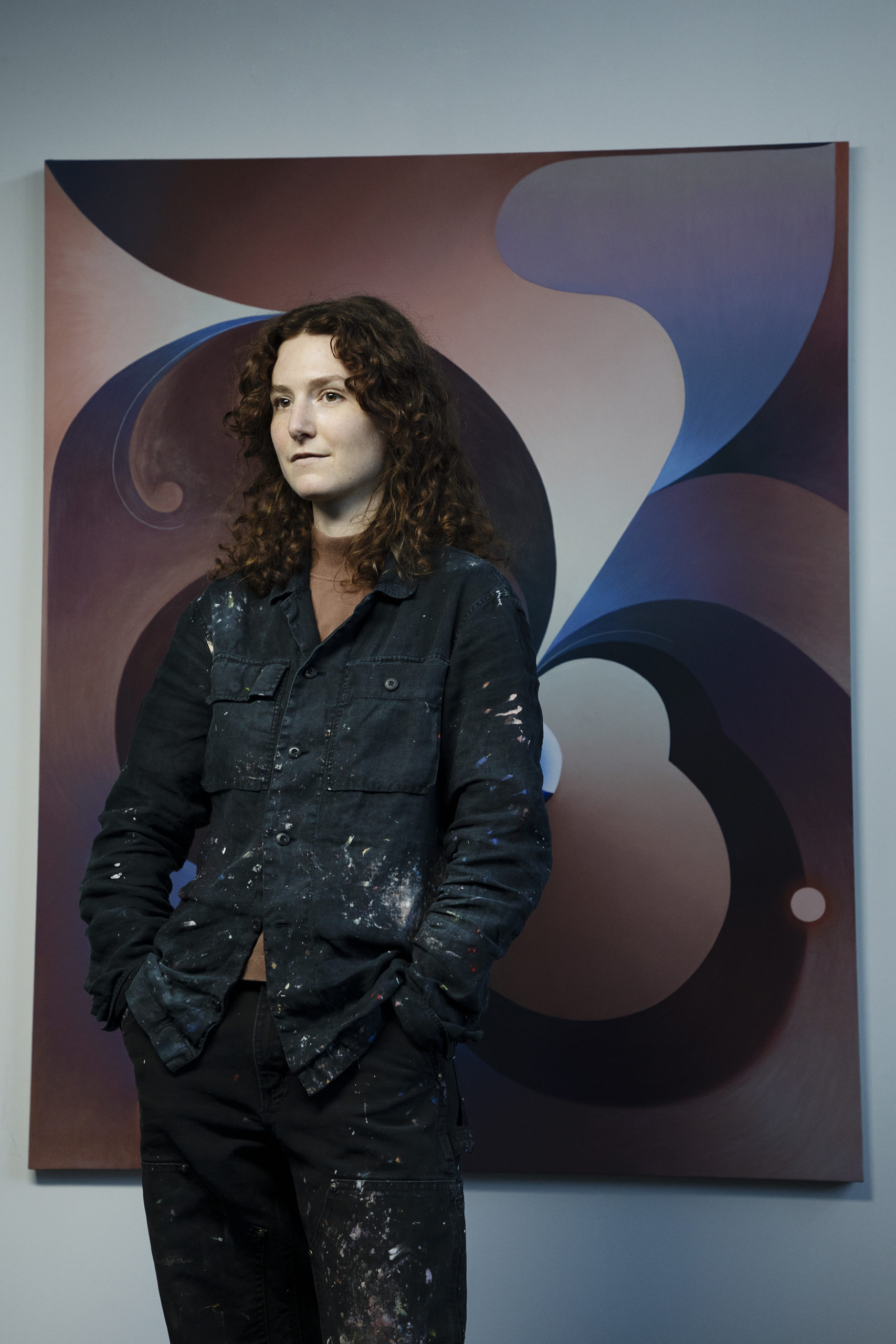 Angela Heisch, photo by Steve Benisty.
Angela Heisch, photo by Steve Benisty.
WW: How has it shifted the perspective or focus in your work, outside of practical day to day, if at all?
AH: I think if anything, it’s been really helpful to have a studio practice during this time. When the day to day has become repetitive or the news is overwhelming, I’m really thankful to have something else to focus on. I do really miss seeing shows and look forward to gallery hopping with ease again.
WW: What are you working on at the moment, and how are you looking ahead to this year?
AH: Right now, I’m working out the next body of work for my solo with Pippy Houldsworth Gallery in the U.K. this September. After a strange and uncertain past year, I’m looking ahead with hope, moving forward.
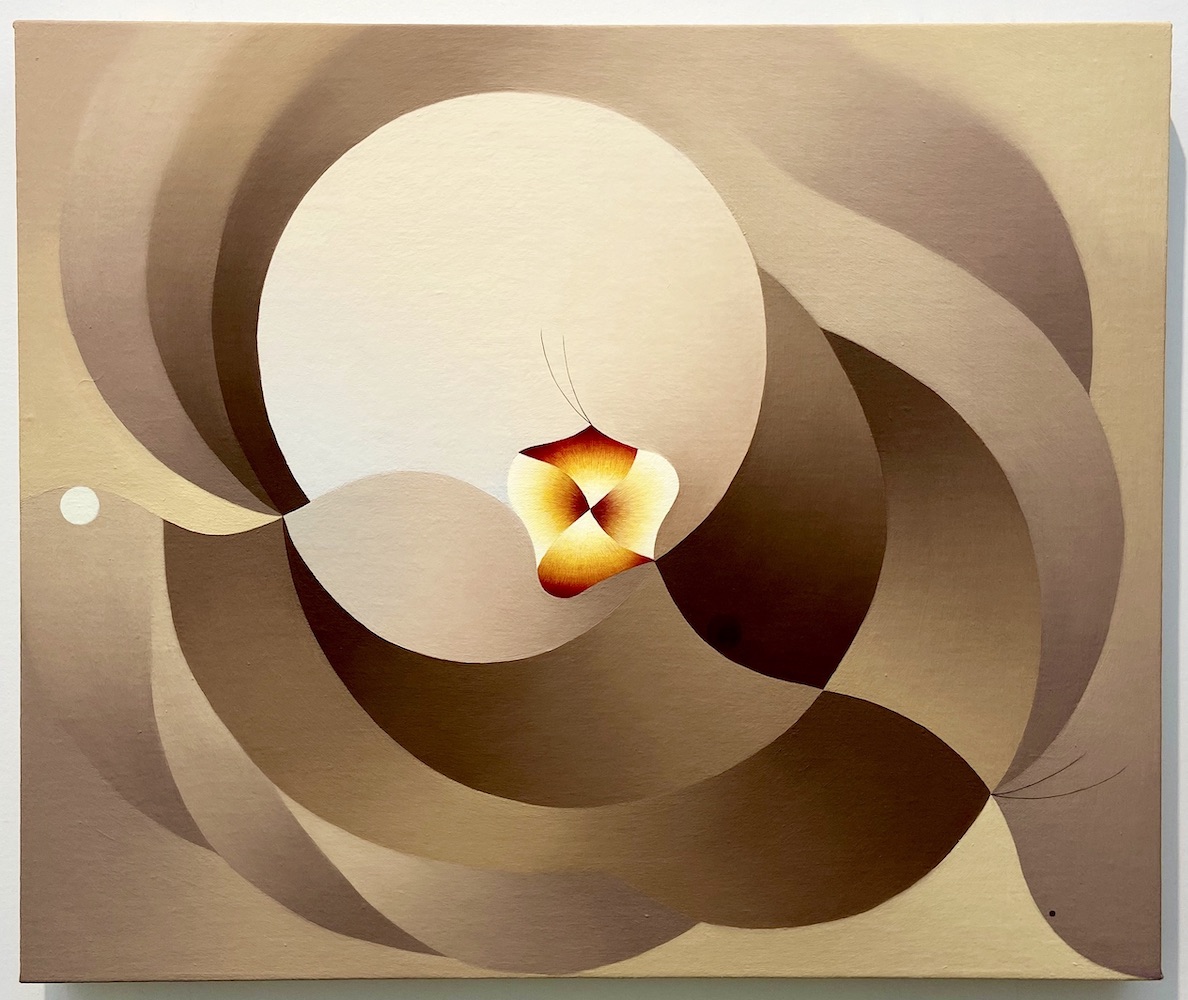 Angela Heisch, “Sandy and the Moon,” 2020, oil on linen over panel, 20 x 24 inches, courtesy of the artist.
Angela Heisch, “Sandy and the Moon,” 2020, oil on linen over panel, 20 x 24 inches, courtesy of the artist.






